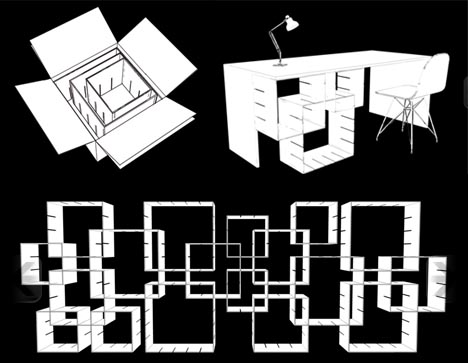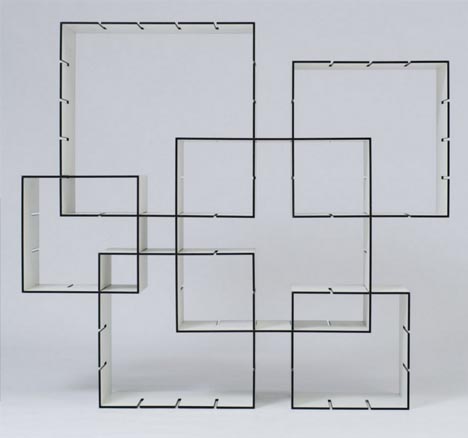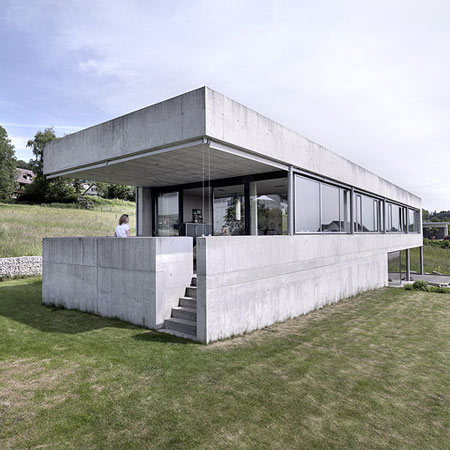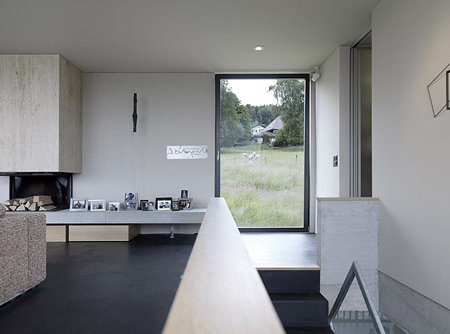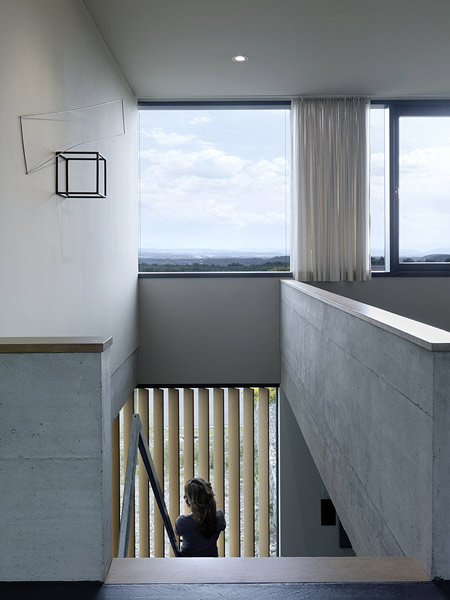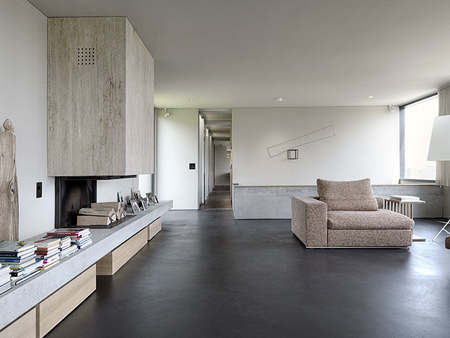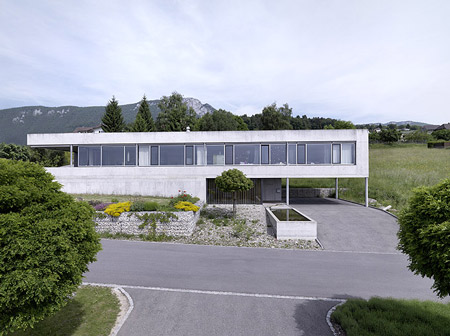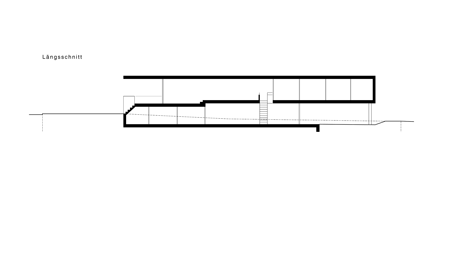Really available. Greece is a delivery destination too. :)
Τρίτη, Μαρτίου 23
Δευτέρα, Μαρτίου 22
Παρασκευή, Μαρτίου 19
ΣΚΑΪ : Έρχονται ρυθμίσεις για τους ημιυπαίθριους

Article applies only to Greek legislation thus is only in Greek.
Καλά νέα για το σύστημα των Πολεοδομιών και του τρόπου που γίνονται οι αδειοδοτήσεις για οικοδομικά έργα. Πρόκειται για νομοσχέδιο που προβλέπει αλλαγές όπως:
- κατάργηση του συντελεστή δόμησης
- αυθημερόν έκδοση για μικρά κτίρια (- μόνο κατοικίες και γραφεία στις Πολεοδομίες
Περιμένω με αγωνία το ΦΕΚ που θα τα αλλάζει όλα αυτά για να δούμε σε λεπτομέρεια πως θα διαμορφωθεί το τοπίο.
Πέμπτη, Μαρτίου 18
Blueprint Magazine - Architecture & Design
Κυριακή, Μαρτίου 14
Largest Solar Plant in Europe Set to Open in Italy
SunEdison announced yesterday that it will be opening up the largest solar plant in Italy later this year. The American company is building the plant in Rovigo (near Venice) on an area as massive as 120 soccer fields and when it is complete, it will cover 9.15 million square feet and be able to produce 72 megawatts of power. According to SunEdison, the plant will be able to meet the electricity needs of 17,000 households and will prevent 41,000 tonnes of carbon dioxide from being released into the atmosphere.
The plant will cost between 200.000.000 and 250.000.000 Euros and is set to be fully operational by the end of the year. In a statement for SunEdison, general manager for Italy, Liborio Francesco Nanni said, “The photovoltaic park in Rovigo province is a milestone in the development and establishment of solar energy in Italy.”
When the Rovigo solar plant is complete, it will overtake the current biggest plant in Europe which is located in Spain. The second biggest is in Germany.
Via YahooGreen
And the Greeks are still sleeping. It is not looking good. :(
Πέμπτη, Μαρτίου 11
Frank Gehry interviewed in his house
edited by Maria Giulia Zunino / photos by Tim Street-Porter / Esto
Frank Gehry and I had been friends since 1975 when Frank was still not very well known on the international scene and I was exploring new ideas for the 1976 Venice Biennale. But Frank had already started to make a name for himself among the less orthodox Californian architects with the house for his artist friend Ron Davis, with his houses in Malibu and Venice, California and with the Santa Monica Place. Franco Raggi
Frank O Gehry What are we gonna talk about?
Franco Raggi I don’t know …your house, your work?
FOG Yes, we have a lot of new work, you should come by the office.
FR I will, but as usual you have not sent me your material for publication … I have been waiting for it for three years …
FOG I have a short memory …
FR Or you are afraid that you won’t get it back, as with the drawings for the [1982] Venice Biennale?
FOG They sent them onto San Francisco a year later … I was really disappointed, you know. And Venice was nothing special …
FR What was wrong there? Was it the place? Was it the exhibition itself? Or was it the way the architects were chosen?
FOG There wasn’t time to do anything properly. I went there expecting Italy to be fun. That everybody would be, you know… When I think of Italians, I think of “vino” and a good time. That’s what I was hoping for. But it was very cold and nobody was talking. Well, there were too many people, like a catalogue of… I felt that it was impersonal. Whenever anybody comes here from Italy, we always take them to dinner. The same people that have been out here, yet nothing, nothing. That was very strange. I was very disappointed. Portoghesi was nasty to me. And my drawings were confiscated, remember? I had to stay… They did not make arrangements for a hotel for me. So I made arrangements through some friends here. Then when I got there, Portoghesi said that he thought that I was staying at the Cipriani, like a rich American trying to be exclusive. That wasn’t the case at all.
FR And what about the exhibition?FOG I was asked to be in it, I was invited to participate well in advance. So then I asked what I should do and they said that I would be told. And then I kept asking and calling; but I got no answers. I met Portoghesi months later in New York and I asked him: “What am I supposed to do? When is it supposed to be ready?” “Don’t worry”, he sais, “you will get a letter.” And then I got a letter from Venice, which said: “In a week we need your drawings.” There was just one weekend to do everything.
I am not lucky with exhibitions …Last year I was invited to Documenta by Aldo Rossi. And they did not put us into the catalogue – the catalogue of Documenta in Kassel (Germany). They exhibited it but did not add me to the catalogue! Why did they invite us?
FR …maybe because architecture is not art?
FOG Good question. That’s why I don’t send any material. FR No, you don’t send the material because you are lazy. Three years has gone by…
FOG I didn’t send it?
FR No, nothing…
FOG (laughs)
FR Looking at your house it seems to me that you are interested in building complex forms with rough, common materials.
FOG It was probably my fault. My loathing for new materials comes for an interest in saving money, and projects that become cheaper and cheaper and cheaper. The model for that in art is Jasper Johns’ paintings with cans and bottles or the way Donald Judd used ionized metal. It has to do with the idea that it is not the material of things that is beautiful as much as the way they are used. You can make exciting spaces with any kind of material at all. So why not use cheaper materials?
FR You use cheap materials in a country that is very rich. Is there a reason for this?
FOG You say that the country is rich, but every client that I have has always a very tight project. I think it comes from my own feelings about that too. I come from a very liberal, political left background. Interested in the masses. I think that rich people can take care of themselves. And since most of my work has been by commercial developers, cost-saving is very important. I grew up with that attitude. I have saved money for most of the people I have worked for. I am much more interested in a kind of client that has money but also shows an intellectual interest in my work.
FR What do you mean by a liberal, left-wing background?
FOG I was raised in Canada, I am Jewish. My family is from Europe, Poland. The border changed quite often, sometimes it was Poland, sometimes Russia. Whatever. Our family were all working class, so I was always aware of unions and struggles. I have an affinity towards liberal politics. Maybe even Marxist at one time in my life. But somehow it evolved. Today I am not as personally involved. I still have those links.
FR How does this background connect to your architecture?FOG I think that it colours my architecture. I went to graduate school in Harvard in city planning, because I felt that dealing with rich people was not such an important issue. City planning and large scale design seemed to me more important from a social point of view …
Here in the sitting room, children are making a terribly noise and mess, why don’t we move upstairs?
FR Are we supposed to stay here in the closet? Among the dresses?
FOG Here is better, you can’t hear any sounds. Let’s continue.
FR What do you think now about your Marxist background? How did it influence your work?
FOG Having been brought up with those tendencies, one has to make choices in life based on those ideals.
FR Do you think that architecture comes from political experience?
FOG I was very involved politically in college. I was involved in demonstrations against nuclear war, against the killing of the Rosenbergs, the spies … Not so much against Vietnam, but against McCarthy. That’s when I went into city planning, but then I found that I didn’t like it. It relates too much to statistical research. I didn’t see any future for planning. I became more and more interested in projects that I can really complete. My own scale.
FR Do you think planning is possible in other countries, and only not here?
FOG You can see examples of good planning in this country. But rarely. Individuals, like Edmund Bacon in Philadelphia, can make an enormous impact. But only one or two people have the ability to really do something. But even their work has been delayed. The capitalist system and the industrialization are so powerful.
FR You don’t think that capitalism and planning go together?
FOG Planning implies something for everyone. It is not compatible with capitalism. The only thing that capitalism has done to this country that is interesting was when the nation became more affluent in the 1960s: it started to help poor people, the blacks started to get out of their ghettos, get educated and achieve business success.
FR Do you think this is now a reaction to the situation?
FOG Yes I do. We have denigrated our ideals. Relating to capitalism, I feel that there is a real decline in ideals, social benefits and experiences. The capitalist leaders have sunk to a very low level.
FR How do you connect to California? Do you live here by chance?FOG Yes, by chance. Before we lived in Toronto, Canada. My father became ill. The doctors thought he had to leave. So we moved here when I was 17 years old. We were very poor when we came here. I went to night school. … It took a long time to be integrated into the community. It was difficult when you don’t have a lot of money. It was like a candy store, but you can’t have the candy. But slowly I prevailed and studied architecture.
FR So this environment in your opinion has had an influence on the kind of architecture that you do? FOG I think it is circumstantial. Circumstantially the environment matters … the kind of opportunities to build here… building things quickly, cheaply. The whole attitude. It has been a “frontier”… I don’t know how long we can still call it a “frontier” in terms of the USA. I don’t think it is as much now anymore that it used to be. It was the beginning of a new world. In terms of America, it moved towards the West. Now the wave has gone backwards East or to Texas.
FR Do you feel Texas is a new frontier?
FOG When I go to Houston or Dallas, it feels like LA when I first came here. The place feels new. Whereas here it is sort of “mezzo-mezzo”. You can drive for hours and everything is old, at least 30years old. But when I arrived here in 1947, San Fernando Valley was empty. A lot of cracker boxes, little tiny stick houses, had been put up. I think that is where my own fascination for stick houses comes from.
FR Do you like unfinished architecture?
FOG In a painterly sense.
FR Do you have a very strong relationship with art and painters?
FOG I don’t think it is as strong as anybody implies, though maybe there is some truth to my relation with art. Obviously I am interested in painting, sculpture, in contemporary art. And I started in art before I went into architecture. It is true I found a lot of support from artists in my early architectural days. In a way there wasn’t an architectural community here that was interesting. The university I went to was not very interesting. The architects practising in LA were not interesting, except for a few of them. Schindler had died. Neutra was not very interesting for me… Lloyd Wright was here, but it was hard to make connections. There wasn’t any debate[lang_en]FR You did not have any masters?
FOG No. Of course I was interested, I had models.
FR If you had to admit to somebody who was a major influence on you, who would that person be?
FOG I found a lot of support from artists, they came to see my buildings. The local artists: Ed Moses Gain Chapman, Mike Lasher later. I have a relationship with him, we went sailing together.
FR Were these all people from California?
FOG Yeah. John Chamberlain used to come here a lot. We used to spend a lot of time together. Claes Oldenburg. I knew Stella and Lichtenstein. Allen Jones mainly. It was a supportive group. They would look at my work. The architects were not interested. And I liked their work. So we shared things. You could see their influence on my work. But I feel sometimes that those architects, who come to see my work or talk to the press about my relation to art, try to place me somewhere which is outside of architecture – somewhere is different from architecture. But I don’t share this opinion about my own work. What I am doing is very traditional. I am not an artist, but an architect. I think good architecture can stand up to anything. It doesn’t have to be called something else. I think that is a mistake in this particular time, to try to use words relating architecture to art. The implications of art are different. In the end of the day, I think that art and architecture are the same, but with different boundaries.
FR Has being in Los Angeles influenced your work or attitude?FOG One takes in an experience within one region and it becomes part of you. Then you spit it out in some way and it is obvious that all those things are part of it, but this happens unconsciously. Well, consciously sometimes I think I am inspired by cinema. I personally don’t go to movies very much. I have seen a few films. Maybe once a year. So I never go. I have a lot of friends in the film industry. I have friends, they are actors, directors.
FR What kind of relationship do you have with the past? I am sure you don’t see yourself as post-modern.
FOG Let me joke here. When I went to university here, the architectural training in the 40s and 1950s was just coming out of the Beaux Arts. Even Berkley was still training its people in the Beaux Arts system. My university was just moving away from that model. We rejected history. We studied Fletcher history. We spent one hour a week on history. Then, after university, I worked for a while and after that I went to Europe in 1960s. And when I arrived in Europe, I was very angry about my training. Because I realized how rich the history of architecture was.
FR You thought you had missed out on something?
FOG When I saw the cathedral, I was furious with my teachers that they treated that thing in a certain way…
FR In this kind of edge or frontier, you had to forget the past…
FOG Yeah, but it had more to do with the problems of architectural training coming out of the Beaux Arts. I blame everything I grew up with (laughs).
FR Like Tom Wolfe.
FOG I agree with Tom Wolfe. When I went to Harvard, I saw some of the ideas… I did not understand why I did not like them, but… Architecture has always been involved with history. It certainly is part of our experience. In the end, most architects go to Europe. I went to Italy in 1961. I visited Florence and spent a week in Rome and Sienna, Verona, I saw Piero della Francesca. I spent a couple of weeks looking at his work… The year I spent in Europe I lived and worked in Paris. It was so enlightening, I couldn’t believe it. I think that I can say that I am not a historian. I can’t remember names and I am not a Palladio-freak. Most of my colleagues are very much involved with him. But I am not.
FR What do you think about Baroque?
FOG I don’t know, I spent a lot of time looking at it.
FR How did you feel about it? Because Baroque was very much on the edge.
FOG That is true. I haven’t studied all those things. But the feeling looking at them was great. I was much more moved with paintings than with architecture. And when I went back over the last three years, I went back to those places which I saw 20 years ago. Carpaccio in the Accademia [in Venice]…FR Do you prefer order or disorder?
FOG I think that’s a misunderstanding of my work. I am very orderly. I think that one signature is like one scene on stage. It is not a cultural, or an on-purpose look. My work looks like me. A little bit messy.
FR There is something that seems like right after a hurricane.
FOG I have a sense of order. I do have a great sense of order. It is a personal sense of order. In other words, when I approach a design project, I always know what not to do. And I know when it feels right. It has to do with not being too critical. I have an interest in the awkward. It means if something is connected perfectly like in Richard Meier’s work, I choose to make it a little disconnected.
FR Which is much more difficult.
FOG I take a lot of time to study this act, which I don’t think many people do.
FR But you don’t think it comes from the roughness of the applied technique. It could come about randomly?
FOG You can relate it to the words design and non-design. You take Italian design and it is very precise, exaggerated and pretty. But that’s not the tradition. The great works in Italy are the opposite. They are strong because they are not pretty, because there is more depth to them.
FR Detail is not important?
FOG It is important, but it is important not to let the detail become the issue. The material and the texture and the space, the feeling… in other words, what is important is the feeling and impression one gets, when looking at a building. But the individual details add up to a whole chain. But when the details become the issue, then it is overdone.
FR Does this also mean that your architecture has more to do with fragmentation than with continuity?
FOG Continuity always applies. Fragmentation is when you cut a piece of this and a piece of that. I am not trying to do this. Maybe it is the way it looks, but I am thinking of it while I am doing it differently and much more as a whole.
FR Do you feel that the world is going to be filled with artefacts?
FOG I accept the times I live in. Here as everywhere. I would have preferred to live in the past. I am as interested in going backwards as anybody else. That could have been much more comfortable. I could easily have been corrupted by post-modernism. It is so easy and so comfortable. I look at it as weakness. To go back is to give up. In order to survive, we have to move forward, find a cure for cancer, a cure for disease and work out how to live on this planet.
FR What gives you the idea that things go forward? Are you excited by something, like electronics, or…?FOG Mostly by medical science. With the possibilities they have. The brain. A better understanding how the brain works is phenomenal. I am not interested in electronics, or gadgets. I am much more interested in natural things, in trees, the birds and the bees, in flowers, the sky, natural phenomena. I am much more interested in beauty, pleasure, family, and all that stuff. These are the greatest values. But I accept that we have to go forward. I try to relate to the time that I am in. I think that my work, as I look back on it, has been a comment on my surroundings, my region, the people I know, the political conditions. I think I would do a very different work in a totalitarian society rather than in a democratic one. There is a difference in the work related to its location in California. There is a different sensibility here than in New York. You can sense a difference in light, in quality of light. Like in this house.
FR This house, where we are now, seems to me a provocative reflection on the concept of context.
FOG I have a rationalization for contextual relations. So I understand that my understanding of context is different than that of the others. A lot of my work grows out of anger with the world around me. Frustration with what is happening.
FR Do you read a lot?
FOG I read a lot of political work. Not so much about architecture. Architecture I read more in the past.
FR Are you fascinated by Japan? By the East?
FOG I have been there for an hour. I think California is more related to Japan than the East. There are more Japanese living here. As you live here, you become more aware of Japanese culture. Just look at Frank Lloyd Wright. Even though he is more a role model for Western architects than Eastern ones. […] I think the architects in California grew out of Lloyd Wright, as an alternative to Europeans like Le Corbusier. I never saw Le Corbusier in California. It was only when I went to Harvard that I saw him, and then in Europe of course… Gordon Drake, do you know that name? Mark related to Lloyd Wright. You should come to the office and see the model of the house I did in 1959. So I grew out of this period.
FR Do you prefer to start a work from the inside? Post-modern buildings start from the outside.
FOG This kind of architecture that I grew out of is interior architecture, even though it relates to the landscape.
FR You make furniture, was that only by chance?
FOG Traditionally, it is also important to design furniture. So I started doing that too. I didn’t like what was available. It was too pretty.
FR Everyone has very old-fashioned houses and furniture.
FOG You are talking about the general public. But I am talking about what do I do. With this furniture I connected with the general public. I didn’t try, I did it and they loved it. But then it scared me, so I stopped. Because I wasn’t a confident architect inside. And I didn’t want to become a furniture designer.
FR It was an identity problem.FOG Yes. I wanted to be an architect, not an artist, not a furniture designer. Now I am happy and I can do everything. I am safe now.
FR In this California area, I love projects on a small scale, but then in the States there are these big glass boxes …
FOG The question is if my work is based on the material I use and the way I make it? It is a good question. And sometimes I question myself. There is definitely an understanding of the cheaper material and the textures. If I were to paint the outside of my house, the corrugate, it would lose some of its character. I am now doing work that is painted. We’ll see in the next few years.
FR Do you feel unsafe?
FOG I feel safe, but inevitably you question yourself. With this house, it was a question of chance. And I didn’t have anybody around me. I have heard that kind of criticism. There is this kind of dismissal of my work, that I am stating: “He just put a house around a house. Compared to the lofty ideas of him…” I am interested in that as I find it quite funny.
FR Cheap has also some quality.FOG Cheap materials have also worries, different worries. They use them differently. When someone puts it together, it says “poor”, when I put it together it says “my way.”
FR Are you stimulated about people putting things together?
FOG Yes, sure, I have… But, you can take one material, like chain links, and ask why somebody makes use of it. It is a political issue. The chain link has all the connotations to me that it has to anybody else: very bad. I built, say, ten buildings before I got interested in chain links. And at least eight out of the ten, once finished, they put a chain link on it. If this culture is so deeply into chain links, I must find a way to use it. You can’t beat it, it is the cheapest way of making enclosures. One person uses it intentionally, and a lot of people are upset by it. That is interesting. But it is also pathetic, because it implies that there is a lot of insensitivity around towards what is going on. We all do it. I am in that case am very holistic. But that is where I get in trouble. If you put a chain link around your house, but you don’t like it, because… I just built the same. So let’s make out of the fact that we have to use chain link. Doing it I am being a legalistic in the sense that I am judgemental of those people and the culture. And no, I don’t like to do it, it is in my character to be that way. I can’t help it. It would be nice if I had not that anger…
The biggest fear is nuclear war. Nuclear war is the insanity of mankind. The world is insane. Reality, what really happens, is much funnier and much more humorous and irrational than anything that anybody could concoct. Anything you or I would try to do to shock is not even that big to reality. That’s what interests me in Venturi’s work. He gets very close to saying that in his work. I think he and I have a similar anger about culture. Clients don’t like that. You loose clients and you can’t expect them to hire you, if you have those ideas. So there is always a contradiction. That contradiction in my life is very strong. I have a hard time. One day I will become completely schizophrenic. I want to do big work, but I don’t want to do it, I don’t want to deal with the anger. Anything you or I would try to do to shock is not even that big to reality. That’s what interests me in Venturi’s work. He gets very close to saying that in his work. I think he and I have a similar anger about culture. Clients don’t like that. You loose clients and you can’t expect them to hire you. Sometimes I have a hard time. I want to do big work, but I don’t want to do it, I don’t want to deal with the anger. One day I will become completely schizophrenic.Franco Raggi (Italy, 1945) is an architect. He was editor of “Casabella” and director of “MODO”, between 1975 and 1989, and he collaborated on themed exhibitions of various editions of the Milan Triennale and the Venice Biennale. In 1980 he opened an architecture and design studio in Milan with Daniela Puppa and Alberto Meda. He is working in the fields of architecture, design (products for Fontana Arte, Cappellini, Poltronova, Luceplan, Barovier & Toso, Artemide, Zeus-Noto), and is interested in writing and drawing. He teaches Interior Architecture at the ISIA in Florence. His ON-OFF lamp, designed with Alberto Meda and Denis Santachiara is part of the MOMA collection in New York.
Frank Gehry (Canada, 1929) is an architect. He lives in Santa Monica, USA. He established his own Santa Monica office in 1962, and set up Gehry Partners, in 2002. He won the Pritzker Prize in 1989 and the Golden Lion for Lifetime Achievement at the Venice Biennale in 2008.
Tag: architettura
Leggi l'articolo in italianoPosted on 03.10.2010 at 9:00 AM and is filed under Highlights.
Τετάρτη, Μαρτίου 10
House in Tinos, Greece, by mX architecture
Designed by French practice mX architecture this recently completed house is located on the north-west edge of Hatzirado village on the Cyclades’ island of Tinos.
The house is planned to operate as a home for hosting friends and family.
The natural sloping landscape of the site has been sculpted in to three ‘plateaus’ descending in height.
The house contains a living and dining room with an open plan kitchen and three bedrooms with en-suite bathrooms.
The walls of the house are constructed of locally sourced natural stone using traditional masonry construction techniques providing support to the raw-faced in-situ concrete roof.
Plans
Project details
Architects: mXarchitecture
Address: Hatzirados, Tinos 84 200 Greece
Client: Private
Site area: 210m²
Building area: 110m²
Cost: € 200 000
Photographs: Elias Handelis
Κυριακή, Μαρτίου 7
Modern, Mobile, Modular
Modernism at its best, this simple shelving system is made up of white wood boxes with black-highlighted slits and front surfaces. These elemental color choices highlight different functions show off the sleek twist to this practical do-it-yourself furniture design.
The basic building blocks of this crafty storage unit series called Konnex is a set of three different boxes – each the same in shape but scaled up and down in size. Even with just three there are many layout options. With more, well, the possibilities are pretty much endless.
Shown here is the as-advertised base unit consisting of six modules (two of each size), but once you get the idea you could create anything you want … pyramids, towers, steps and so forth to fit any nook and cranny you have in your home.
And that is just thinking in two dimensions. What would happen if you started adding slots so you could build the system out from the wall as well, or use them to turn corners or even span the ceiling? The only catch: one could wish these were designed to pack flat, making them more mobile and save shipping space (and cost) but perhaps the next-generation variants will be … it just seems strange to have storage-system boxes that require, well, another box in which to store and ship them.
Click for more designs related to Furniture or Storage & Shelves -->
Nice shelf system... customizable, modular, mobile... ;)
Παρασκευή, Μαρτίου 5
Ραδιο αρβυλα - Ο Χιτλερ για την Ελλαδα 24-02-10
Great Hitler parody about the Greek - German controversy on the economic state of Greece. Greek only.
House Szélpal by Felber Szélpal Architekten
Zurich photographer Bruno Helbling has sent us his photos of a house on a hillside in Switzerland by Swiss office Felber Szélpal Architekten.
Called House Szélpal, the two-storey building is located in Riedholz.
A band of windows wraps round the upper floor of the concrete residence.
The information below is from the architects:
HOUSE SZELPALThe narrow form of the property together with its descending topography has amazing architectural consequences on the house itself.
The result is an elongated cube with two floors on the basis of an S-shape in section.
Because the plot is inclined lengthwise, the interior corresponds with the spaces outside on opposite ends of the building depending on the floor.
The entrance on the ground floor is on a level with the site to the east front, whereas the garden can be reached to the west from the terrace above.
A marvellous view on the entire alpine panorama can be caught on the upper floor, a quality which brings a hierarchy in between above and below.
Beside the entrance and the carport, the ground floor consists of other serving rooms like the office, the utility rooms and the cellar. All the main rooms for living are situated above, they are almost entirely oriented towards the view.
The monolithic concrete body has an elegant attitude, it appears clear and hard outside, while it is soft and warm inside.
By its internal insulation, the construction can be adapted to changing needs of the family in a simple and economical manner also later on.
The statics can easily be recognized outside, a long strip of a ribbon window relates the house to the panoramic view.
The building is inserted into the site without effecting much earthworks. Surrounding plants, flowers and trees create a powerful contrast between figure and nature.
Architects felber szélpal architekten ag, Solothurn
Location Riedholz, Switzerland
Project Type Single family house
Total Surface 400 m2
Interior Space 270 m2
Photographer Bruno Helbling, Zurich
Construction Company Galli AG, Surface and Civil Construction
Structural Engineer BSB+Partners, Engineers and Planners
Furniture Theo Jakob AG


































